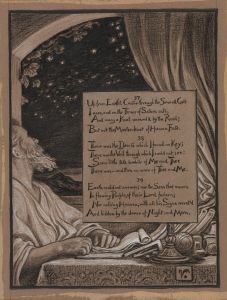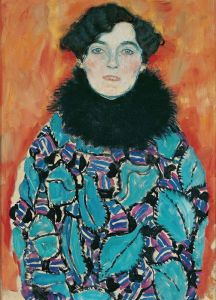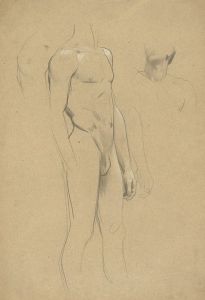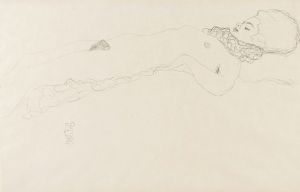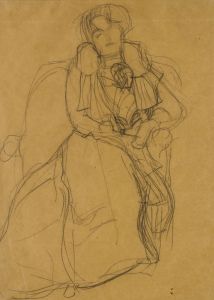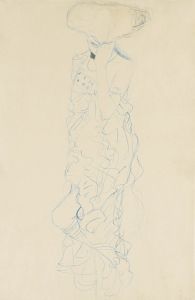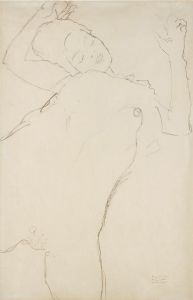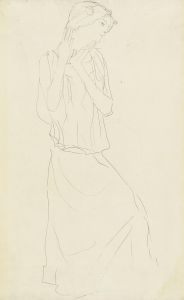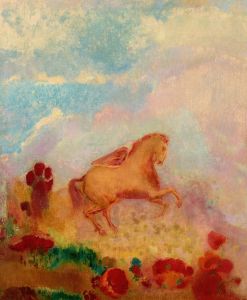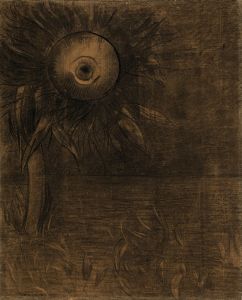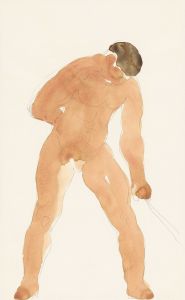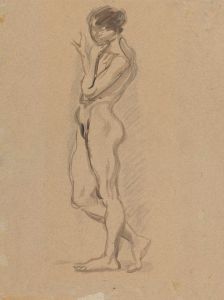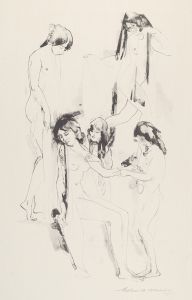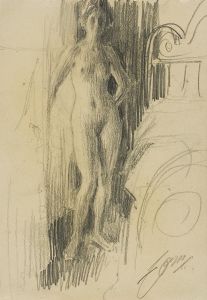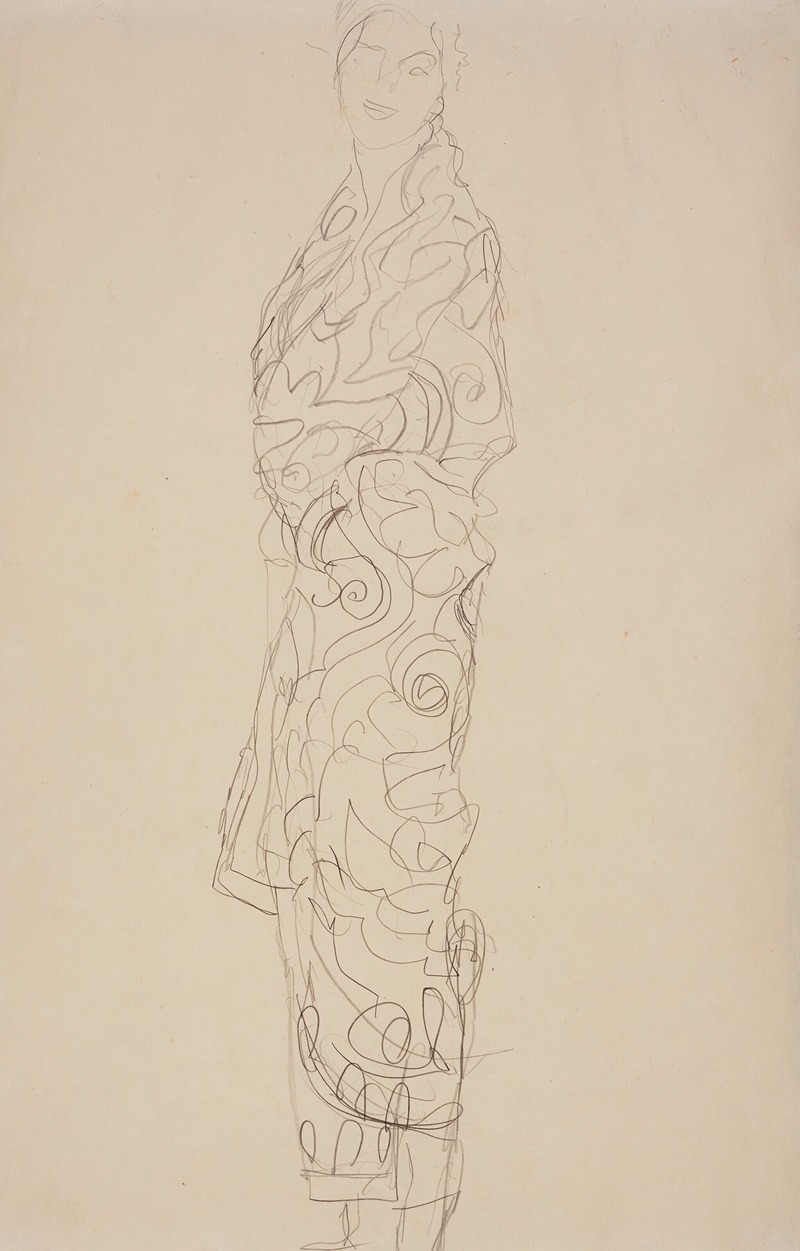
Stehende, in Tücher gehüllt
A hand-painted replica of Gustav Klimt’s masterpiece Stehende, in Tücher gehüllt, meticulously crafted by professional artists to capture the true essence of the original. Each piece is created with museum-quality canvas and rare mineral pigments, carefully painted by experienced artists with delicate brushstrokes and rich, layered colors to perfectly recreate the texture of the original artwork. Unlike machine-printed reproductions, this hand-painted version brings the painting to life, infused with the artist’s emotions and skill in every stroke. Whether for personal collection or home decoration, it instantly elevates the artistic atmosphere of any space.
Gustav Klimt, an Austrian symbolist painter, is renowned for his distinctive style that combines symbolic themes with a unique decorative approach. One of his lesser-known works, "Stehende, in Tücher gehüllt" (Standing, Draped in Cloth), exemplifies his fascination with the human form and intricate patterns. Although this particular piece is not as widely recognized as some of his other masterpieces, it still reflects the essential elements of Klimt's artistic vision.
Klimt was born in 1862 in Baumgarten, near Vienna, and became a prominent figure in the Vienna Secession movement, which sought to break away from traditional academic art. His work is characterized by a blend of symbolism, eroticism, and an exploration of the female form. Klimt's art often features elaborate patterns, gold leaf, and a rich color palette, which are evident in many of his paintings.
"Stehende, in Tücher gehüllt" is believed to have been created during the early 20th century, a period when Klimt was deeply engaged in exploring themes of femininity and sensuality. The painting depicts a standing female figure enveloped in flowing drapery, a common motif in Klimt's work. The use of drapery not only highlights the contours of the body but also serves as a canvas for Klimt's intricate patterns and textures.
Klimt's portrayal of women often oscillates between the sensual and the ethereal, capturing the complexity of human emotions and relationships. In "Stehende, in Tücher gehüllt," the draped figure may suggest a sense of mystery and allure, inviting viewers to contemplate the identity and emotions of the subject. The painting's composition and style are indicative of Klimt's mature period, where he masterfully combined realism with decorative abstraction.
The influence of various artistic movements is evident in Klimt's work. He was inspired by Byzantine mosaics, which is reflected in his use of gold and intricate detailing. Additionally, the Art Nouveau movement, with its emphasis on organic forms and flowing lines, also played a significant role in shaping Klimt's aesthetic.
Klimt's art was not without controversy. His candid depictions of the female form and exploration of erotic themes often sparked debate and criticism. However, his work was also celebrated for its innovation and beauty, earning him a place as one of the leading artists of his time.
"Stehende, in Tücher gehüllt" may not be as famous as Klimt's "The Kiss" or "Portrait of Adele Bloch-Bauer I," but it remains an important part of his oeuvre. It showcases his ability to blend figuration with abstraction, creating a harmonious balance between the subject and the decorative elements.
Today, Klimt's work continues to captivate audiences worldwide, and his influence can be seen in various aspects of contemporary art and design. His exploration of themes such as beauty, sensuality, and the complexity of human emotions ensures that his art remains relevant and appreciated by new generations of art enthusiasts. While specific details about "Stehende, in Tücher gehüllt" may be limited, the painting stands as a testament to Klimt's enduring legacy and his contribution to the world of art.





